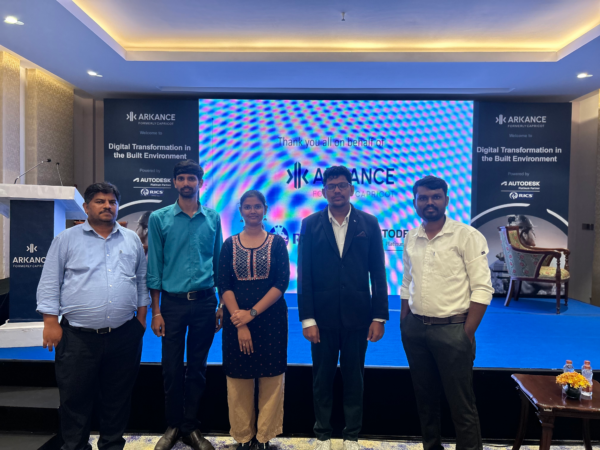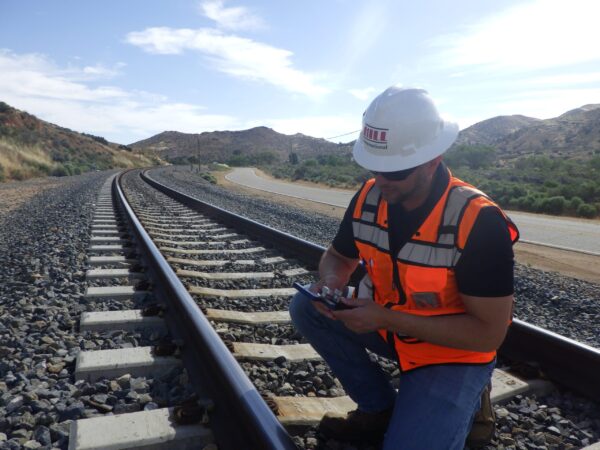
March 12, 2025 | Articles
Get Stoked: Hill International Makes Big Waves in Spain’s Surfing Scene

Early in July, the Hill International Cost Consultancy team attended “Digital Transformation in the Built Environment,” hosted by the Royal Institution of Chartered Surveyors (RICS) in Bengaluru, India. At the event, professionals from India’s architecture, engineering, and construction (AEC) industry discussed the latest and greatest digital tools available to project teams, including enterprise resource planning (ERP) platforms, building information modeling (BIM), data analytics, cost management software, and project management information systems (PMISs), as well as their advantages and challenges to their implementation.
“These tools illustrate the ongoing digital transformation of the AEC industry and can be very useful in the right hands,” says Hill Quantity Surveyor Assistant Manoj R, who was in attendance with colleagues Senior Cost Manager Pandurangan Eallppan, Senior Cost Manager Ravikumar S, Senior Quantity Surveyor Abirami Mani, and Executive Quantity Surveyor Kapu Prakash. “They allow project management professionals to integrate management processes, manage projects from anywhere in the world, and address issues in real time. When the right software is in place, we can effectively monitor every aspect of a project with a single click. This saves time and enables projects to progress more quickly.”

According to Ravikumar, the potential for integration is particularly powerful. For example, he says that the best PMISs provide a user-friendly, one-stop shop for organizing meetings, preparing minutes, assigning work, tracking pending work, reviewing drawings, live site monitoring, managing requests for information, and much more. This integration streamlines management tasks, simplifies reporting processes, facilitates internal and external communications, and reduces costs associated with maintaining multiple software platforms.
As technology continues to evolve, Abirami expects compatibility between systems to lead to even more benefits. “Compatibility between PMISs and cost management tools like WinQS, CostX, CATO, and On Center software would allow project teams to more easily incorporate their cost managers’ data into project management processes,” she points out. “This may improve projects’ budget performance and help offset some of the costs associated with the increased use of digital technology.”
While the advantages of digital technology are manifold, there are also challenges in its uptake, such as increased data security risks and the lack of appropriate governmental frameworks and approval processes for industry-wide adoption. As Abirami hinted, most important are the high costs of these tools, which can be prohibitive for clients with strict budgets. One panelist at the event demonstrated the potential tradeoffs: By using new technologies, his project team spent 10% more than planned, but completed an anticipated 10-month project in only 6 months.
The added costs of digital technology comprise the price of subscriptions as well as the purchase of any hardware required to use the software effectively, such as tablets for field inspectors or a camera system to maintain a live site feed. An additional cost, which is less visible but more important, is the time and effort required to train project staff and stakeholders in the use of new software. Kapu says: “More and more project owners in India’s AEC industry are using these tools, but state-of-the-art software alone is not sufficient for successfully managing construction projects. To make the most of this complex technology, project teams need expert staff as well as proper training. Without such training, you get underutilization and a poor return on investment. On the other hand, when experienced professionals do receive sufficient training, the results can be transformative.”
Pandurangan agrees, adding that while it is important for owners to budget for and provide training to their project staff, professional service providers must continue tailoring their in-house training and development to keep pace with construction’s digital transformation. “That’s why we’re glad to participate in RICS events and other conferences with a focus on technology,” he says. “By continuing to learn and grow, our teams are able to better manage the risks associated with digitalization and use all available tools to drive innovation and deliver our clients’ projects more efficiently.”
Throughout India and around the world, Hill teams are constantly honing their technological skills through leading industry training with organizations like RICS and in-house learning and development resources like the award-winning Hill University. This professional development helps our experts stay at the cutting edge of construction’s digital transformation to better deliver the infrastructure of change. To learn more about a career at our fast-paced, technology-forward workplace, please visit: www.hillintl.com/careers.
Share

March 12, 2025 | Articles
Get Stoked: Hill International Makes Big Waves in Spain’s Surfing Scene

March 9, 2025 | Articles
Project Manager TJ Pinales: Helping Along the Road in San Antonio

March 4, 2025 | Articles
Balancing the Equation: An Interview with Project Manager Tracy Wiyrick

March 1, 2025 | Articles
A Lifelong Project: Calypso Kyriakopoulou’s Multifaceted Career in Construction

February 10, 2025 | Articles
Dual Delivery: A Viable Strategy for Complex Transit Projects

January 23, 2025 | Articles
Plotting a Roadmap to Success on the Torres de Colón Renovation

December 12, 2024 | Articles
Progressive Design-Build for Rail and Transit Projects: Room to Run

December 9, 2024 | Articles
Unlocking Growth: Maximizing the Benefits of the SBA’s Mentor-Protégé Program

December 8, 2024 | Articles
Mediterranean Luxury a Century in the Making: Four Seasons Resort Mallorca at Formentor